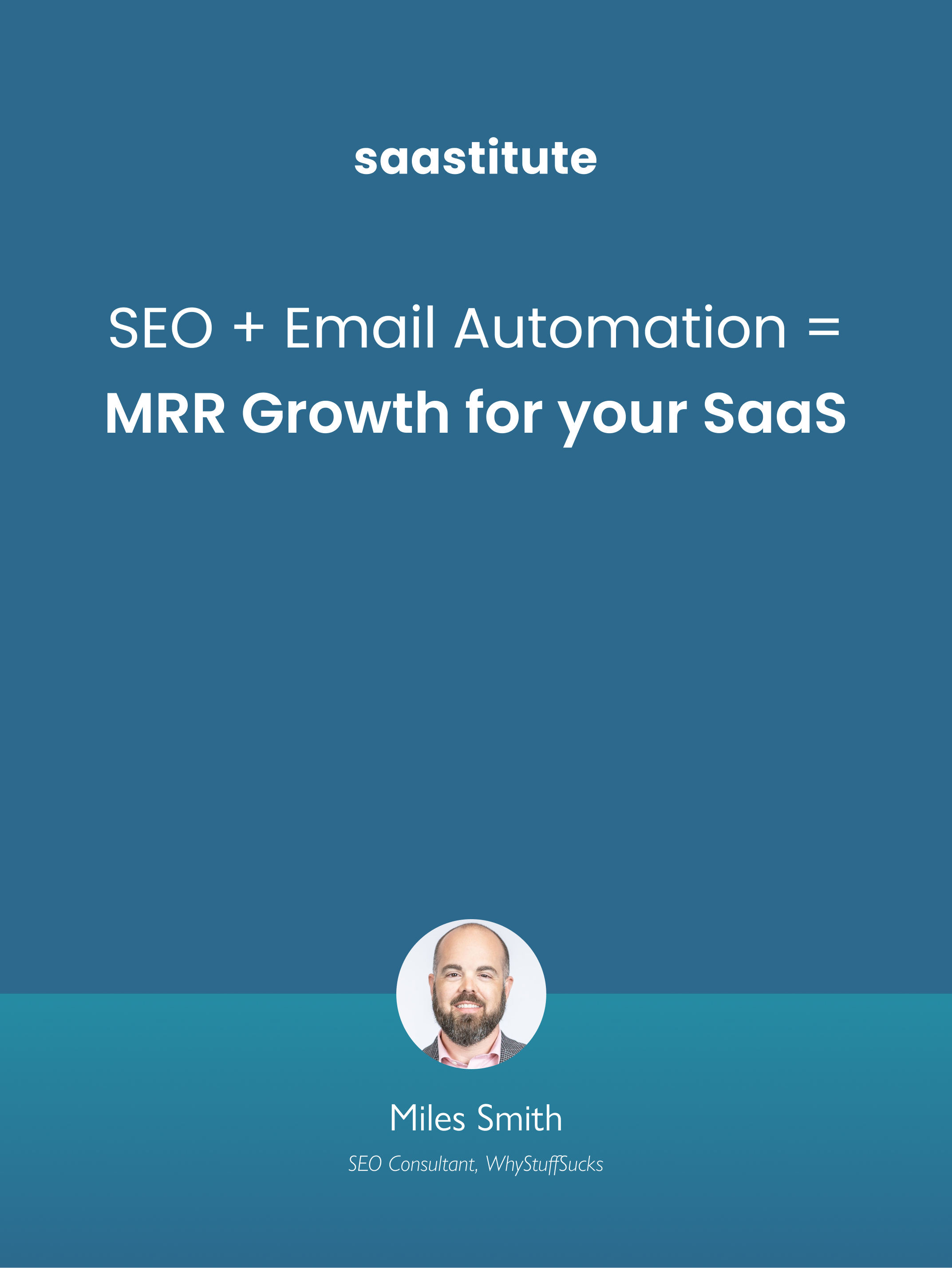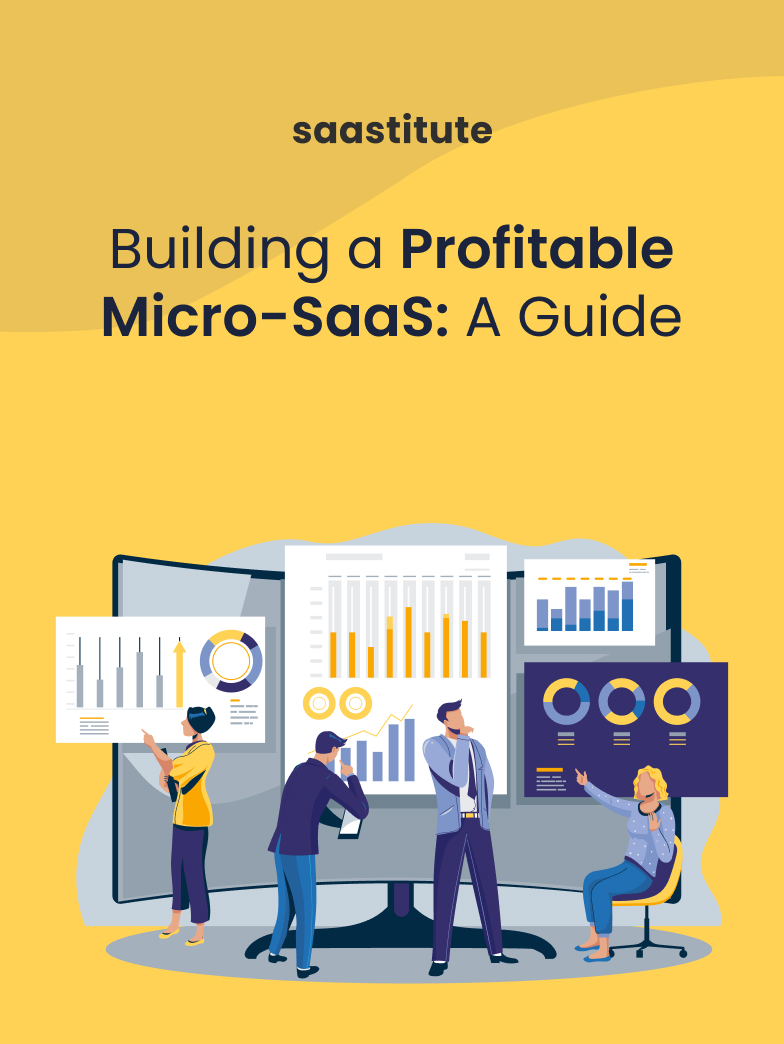Top 10 SaaS Metrics to Track for your Business
Take a look at the Top 10 SaaS metrics, what they mean, how to calculate them, and how you can use them to drive growth for your SaaS business.

Every startup ever is chasing growth, but only a handful get it right. Why? Probably because it is difficult to define growth objectively, and measure the change in it.
More often than not we end up building inferences on wrong SaaS metrics, or we find ourselves at a loss of direction with the overwhelming streams of metrics in a typical saas business.
It’ll be criminal to turn an idea into a product and then not be able to understand if you are growing (in the right direction) - But we are here to the rescue.
Out of all the saas metrics, here are the top 10 that we feel are essential to monitor and evaluate the health and growth of your saas business. I also put some notes on how to translate changes in these metrics into a read or a prescription -
1. Churn Rate
While getting new customers is important, it is even more important to retain the ones you already have. The churn rate is a measure of the amount of business that you have lost over a specific amount of time. It can be calculated on a monthly or quarterly basis and is one of the most essential saas metrics. Keeping track of the churn rate can lead to better customer retention practices.
There are two types of Churn Rates you must track :
Customer Churn Rate -
The Customer Churn rate calculates the number of customers you lost. When tracking customer churn rate, it is important to keep track of the customer personae, industry, or any other relevant information that could help you figure out what made them leave.
Revenue Churn Rate -
The Revenue Churn rate calculates the amount of revenue you lost. Since different customers bring different amounts of revenue to your company, the customer churn alone doesn’t paint an accurate picture of the business that you have lost and now must replace.
The other side of the churn rate is the retention rate. Customer retention is essential as catering to existing customers is more profitable than constantly acquiring new customers. Once you have the Churn reports, you can discuss the strategies to improve or maintain them across different departments including customer success, marketing, sales, etc.
Also see: Benchmarks for Churn rate in B2B SaaS
2. Recurring Revenue (ARR and MRR)
The Recurring Revenue is a measure of the amount of money that customers spend on your product or service on a recurring basis. Since most SaaS businesses offer services that come with a subscription model, recurring revenue is one of the most important SaaS metrics that you must track. It can help you project future growth for your business.
Recurring revenue is calculated in two ways -
Monthly Recurring Revenue or MRR
MRR is the amount of money that customers spend in a month
Annual Recurring Revenue or ARR
ARR is the amount of money that customers spend in a year
To Calculate MRR and ARR -

Along with helping you monitor the overall growth of your business, recurring revenues can also help you incentivize growth. Since subscription models have different pricing plans, tracking recurring revenue for individual customers can help you evaluate which customers bring the most amount of revenue. This can in turn lead to more incentives for these customers in the form of customer loyalty programs to help you generate leads.
3. Average revenue per account (ARPA)
The Average Revenue per account or the ARPA (also known as Average revenue per user or ARPU) is a measure of the average amount of money generated by a customer over the course of a month. It is essential to track the ARPA because it directly relates to your recurring revenue, i.e. the greater the ARPA, the greater will be your MRR and ARR. It also helps you judge the sustainability of your business - a low ARPA means that scaling your business model relies heavily on the number of customers acquired - which can be costly. High ARPAs mean that your business is profitable on qualitative grounds more than quantitative grounds.
To calculate ARPA -

For example, if your MRR = $50,000, and the number of active customers is 500, the ARPA would be -
ARPA = 50000/500 = $100
4. Customer Lifetime Value (CLV)
The Customer Lifetime Value or CLV (also known as Lifetime Value or LTV) is a measure of the average amount of money that a user spends on your product or service over time. It is important to track the CLV as a saas metric because it provides insight into the growth of your company - it is the average worth of your customers. For small-scale start-ups, CLV is a great metric for investors to judge the value of your company. In subscription-based SaaS services, the CLV keeps increasing with each renewal due to expansion revenue.
To calculate the CLV -

For example, if the monthly churn rate is 2%, and the ARPA is $2000, then CLV would be -
CLV = (1/0.02) x 2000 = $100,000
5. Customer Acquisition Cost (CAC)
The Customer Acquisition Cost or CAC is the cost of acquiring a new customer for your business and the value that they bring to the company. Since customer acquisition is one of the top priorities of any business, the CAC, along with the CLV is a great metric to judge whether your business model is sustainable or not.
To calculate the CAC -

For example, if the Total Sales and Marketing expenditure was $50,000 for a month, and you gained 50 new customers, then CAC would be -
CAC = 50,000/50 = $1000
When tracking the CAC for your business, it is important to also keep track of metrics like Months to recover CAC and the CAC to CLV ratio.
6. Months to recover CAC
This is a saas metric to measure the amount of time it takes to recover the cost of customer acquisition via the revenue they produce. It is an insight into the time it takes for a customer to start generating ROI.
To calculate this -

For example, if your CAC = $2000, the MRR = $200, and the Gross Margin is 80%, then
Months to recover CAC = 2000/(200x0.8) = 12.5 months
It takes some time for new businesses to start generating revenue, so do not be alarmed if you’re not immediately breaking even. The initial phase of a business prioritizes customer acquisition which may lead to a cashflow problem. As your business grows, the number of months to recover CAC must grow smaller.

7. CAC to LTV Ratio
The CAC to CLV ratio is another SaaS metric that helps you keep track of the sustainability of your business. With the help of this, you can keep a check on your sales and marketing campaigns. For a healthy and sustainable business the CAC: CLV ratio looks close to 1:3. Lower ratios (1:1, for example) mean that you’re spending too much on campaigns that are not bringing enough valuable customers, and higher ratios (1:5, for example) mean that you can afford to spend more and probably acquire more new business.
8. Expansion revenue
Studies have shown that the amount of money that a customer spends on your business is directly proportional to the length of their relationship with your company. This is linked to brand loyalty fostered through good customer service. This extra revenue that longtime customers bring in is known as Expansion revenue. Tracking Expansion revenue can help you monitor if your customer service, along with sales and marketing is adding value to your customer’s experience. While a lot of companies lay a great deal of emphasis on new customers, expansion revenue will help you realize that catering to your existing customer base also pays off well.
Expansion revenue can be calculated on a monthly or yearly basis, as the sum of all extra purchases made by existing customers. These include up-sells, widgets, cross-sells, etc.
9. Net Promoter Score (NPS)
The Net Promoter Score or NPS is a quantitative and qualitative measure of customer satisfaction and loyalty. Data is usually collected via surveys that ask the customer base to rate the likelihood of them recommending your business to a colleague or friend. Once ranked and organized, these customer reviews help you determine the growth of your customer satisfaction. If you see a drop in customer satisfaction, you can use specific feedback from the survey to make changes and enhance the customer experience.
10. Active Users
The final SaaS metric that you must track for your business is the number of active users that engage with your product or service on a daily or weekly basis. The first step to calculating the number of active users is to define the definition of an active user. For a payment app, it’s someone who completes a transaction; for a social media app, it could be someone who logs in and interacts with content, etc.
Once you have the data on active users, you can compare it to the numbers of a specific event, for example - creating a post on your social media app. If there is a huge gap in the number of daily users and new posts, then you can evaluate whether you are attracting the right kind of users, or if the app UI needs changes, etc. In this way, tracking daily users can help you evaluate a number of different functions, ranging across departments, for your business.
While Active Users can be an essential SaaS metric for some businesses, it is important to note that for some SaaS businesses it might not play that important a role in tracking growth. For example, the number of Active Users for a social media platform is of utmost value, whereas for payroll software it’s not essential!
Now that you have the gist of the top SaaS metrics that you must track for your business, you must remember to not treat them only as tracking and reporting metrics, but as metrics that can facilitate growth. Do not expect dramatic changes overnight, but remember that sustained small improvements can make a huge difference to the health and growth of your SaaS business. A lot of growth hacks are hit and trial - what works for one business at one time, may not work for another at some other time, but tracking these metrics can help you evaluate whether your strategy is working or not. We hope this was helpful!
Also see: The Great Big List of Industry Benchmarks for SaaS Metrics














.svg)


